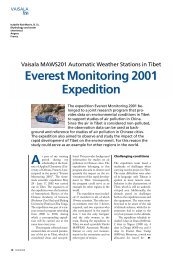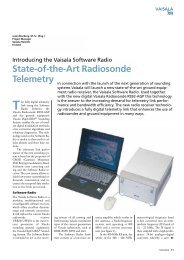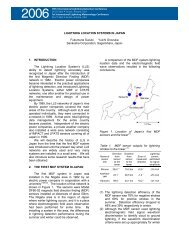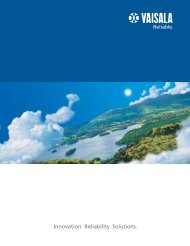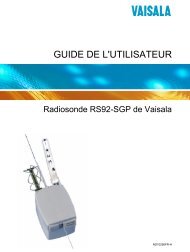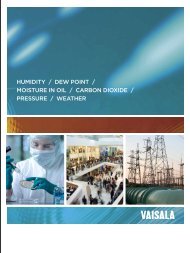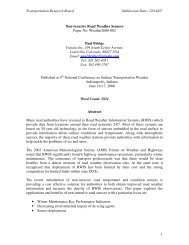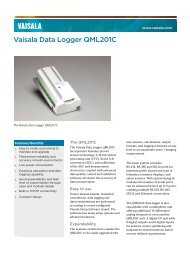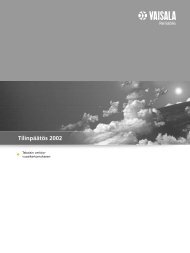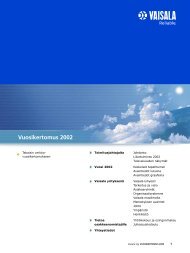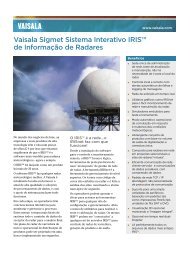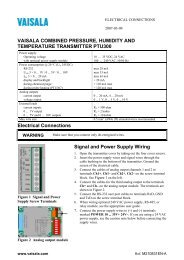Vaisala News 180 - Full Magazine
Vaisala News 180 - Full Magazine
Vaisala News 180 - Full Magazine
Create successful ePaper yourself
Turn your PDF publications into a flip-book with our unique Google optimized e-Paper software.
Jussi Nikkarinen (left) and Reino Paloniemi<br />
check the process is running smoothly in<br />
the control room.<br />
air dryer. “The investment was easier<br />
to justify once we had the humidity<br />
data to back-up our argument,” Paloniemi<br />
points out.<br />
Clear benefits gained<br />
through humidity<br />
measurement<br />
“Humidity measurement has brought<br />
clear benefits to our operations,”<br />
Nikkarinen states. “For example,<br />
product quality has improved significantly,<br />
and our production capacity<br />
has increased. It has also improved<br />
our energy-efficiency, as now we<br />
don’t have to heat the product too<br />
much.” Humidity measurement has<br />
also increased the team members’<br />
understanding of the process, and<br />
removed most of the guesswork.<br />
“We’ve been very impressed<br />
with the stability and reliability of<br />
the transmitters, which still work as<br />
new after ten years of use - despite<br />
all the dust and particles in the air,”<br />
Paloniemi commends.<br />
Further improvements<br />
possible<br />
Kemira’s polyacrylamide drying<br />
process could still be further developed,<br />
and some plans are already in<br />
place. The plant uses a central data<br />
collection system for overall process<br />
monitoring. This could be further<br />
enhanced with an automated control<br />
system, which could make the<br />
required adjustments automatically.<br />
“We could also introduce air flow<br />
measurement in the air channels,”<br />
Nikkarinen adds.<br />
The team at Vaasa has also<br />
cooperated with the Finnish<br />
Meteorological Institute, in order<br />
to find out the impacts of different<br />
weather conditions on the drying<br />
process. “We discovered that warm<br />
summer days are likely to cause most<br />
problems with their hot and humid<br />
conditions.”<br />
“It is important to remember that<br />
measurement alone is not enough.<br />
The information needs to be stored<br />
and presented in an accessible<br />
format. We have people working<br />
around the clock in three shifts.<br />
When you start your shift, it is very<br />
useful to be able to check what’s<br />
been going on in the process during<br />
the previous shifts,” Nikkarinen<br />
concludes.<br />
Further information:<br />
www.vaisala.com/humidity<br />
First published in the– European<br />
Process Engineer magazine,<br />
www.engineerlive.com<br />
Reino Paloniemi and Jussi Nikkarinen use<br />
a <strong>Vaisala</strong> handheld humidity probe for spotchecking<br />
and configuring the measurements<br />
produced by the fixed humidity transmitters.<br />
HUMICAP® sensor<br />
<strong>Vaisala</strong>’s relative humidity<br />
products incorporate a<br />
capacitive thin-film polymer<br />
sensor, <strong>Vaisala</strong> HUMICAP ® . The<br />
HUMICAP ® sensor features high<br />
accuracy, long-term stability<br />
and negligible hysteresis. It is<br />
insensitive to dust, particulate<br />
dirt and most chemicals.<br />
All HUMICAP ® products<br />
provide a full measurement<br />
range of relative humidity,<br />
0 ... 100 % RH. In addition,<br />
depending on sensor model,<br />
the sensor is available with a<br />
chemical purge option, which<br />
maintains accuracy in environments<br />
with high concentrations<br />
of chemicals, or with a<br />
sensor preheat option that<br />
prevents condensation.<br />
Operating principle<br />
The thin-film polymer<br />
either absorbs or releases<br />
water vapor as the relative<br />
humidity of the ambient air<br />
rises or drops. The dielectric<br />
properties of the polymer<br />
film depend on the amount of<br />
water contained in it: as the<br />
relative humidity changes, the<br />
dielectric properties of the film<br />
change, and so the capacitance<br />
of the sensor changes. The<br />
electronics of the instrument<br />
measure the capacitance of the<br />
sensor and convert it into a<br />
humidity reading.<br />
<strong>180</strong>/2009 7




